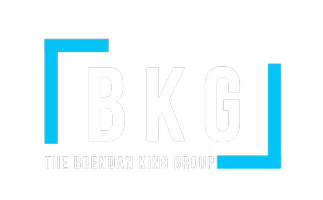What is going on with Interest rates?

Navigating the real estate market can be challenging, especially with fluctuating interest rates affecting both buyers and sellers. Understanding the current dynamics of interest rates involves looking at several key factors, including the Federal Reserve's policies, the broader economy, tariffs, and unemployment rates.
The Federal Reserve (The Fed) plays a crucial role in setting interest rates through its monetary policy. When the Fed adjusts the federal funds rate, it influences borrowing costs across the economy, including mortgage rates. Recently, the Fed has been more active in adjusting rates to manage inflation and economic growth. For example, in response to economic slowdowns or recessions, the Fed might lower interest rates to encourage borrowing and investment. Conversely, to combat high inflation, they may raise rates to cool down an overheating economy.
The overall state of the economy significantly impacts interest rates as well. When economic growth is strong, demand for loans often increases, which can drive up interest rates. On the other hand, during periods of economic downturn or uncertainty, such as those caused by global events like trade wars or pandemics, there is often a decrease in demand for loans, prompting lower interest rates to stimulate economic activity.
Tariffs also play a role in shaping the economic landscape and influencing interest rates. Tariffs can lead to higher costs for goods and services, contributing to inflationary pressures. If inflation rises too quickly due to tariffs on imported goods, the Fed may respond by increasing interest rates to keep inflation in check. This scenario can make mortgages more expensive for buyers but might also lead sellers to adjust their pricing strategies in response to changing buyer affordability.
Unemployment is another critical factor that affects interest rates and the real estate market. Lower unemployment typically signals a healthy economy with more people earning wages and potentially looking to buy homes. This increased demand can push up home prices and lead to higher mortgage rates as lenders anticipate greater borrowing activity. Conversely, high unemployment can suppress demand for housing as fewer people have stable incomes necessary for purchasing homes. In such cases, mortgage lenders might lower interest rates to attract buyers.
For sellers in today's market, understanding these dynamics is essential for pricing properties competitively and timing sales strategically. Higher interest rates can reduce the pool of qualified buyers since mortgages become more expensive. Sellers might need to be more flexible with pricing or offer incentives like paying for closing costs or providing home warranties to attract buyers who are facing higher borrowing costs.
Buyers should stay informed about current interest rate trends and economic indicators that could influence their purchasing power. Locking in a mortgage rate when they are relatively low can save thousands of dollars over the life of a loan. However, buyers must also consider their long-term financial stability and job security before making significant commitments.
In summary, several factors contribute to current interest rate trends affecting real estate: The Fed's monetary policies aimed at managing inflation and economic growth; broader economic conditions influenced by global events like tariffs; and domestic factors such as unemployment levels. Both sellers and buyers need to stay informed about these elements to make strategic decisions in an ever-changing market landscape.
By keeping an eye on these indicators and understanding how they interact with each other, participants in the real estate market can better navigate their buying or selling journeys despite fluctuating interest rates.
Categories
Recent Posts










GET MORE INFORMATION


